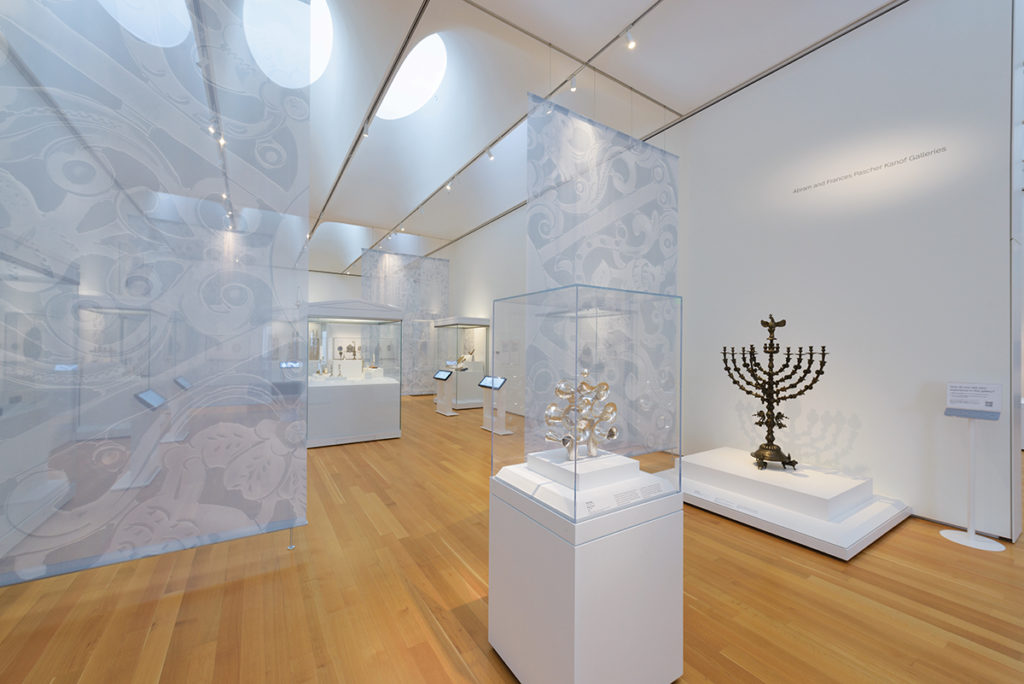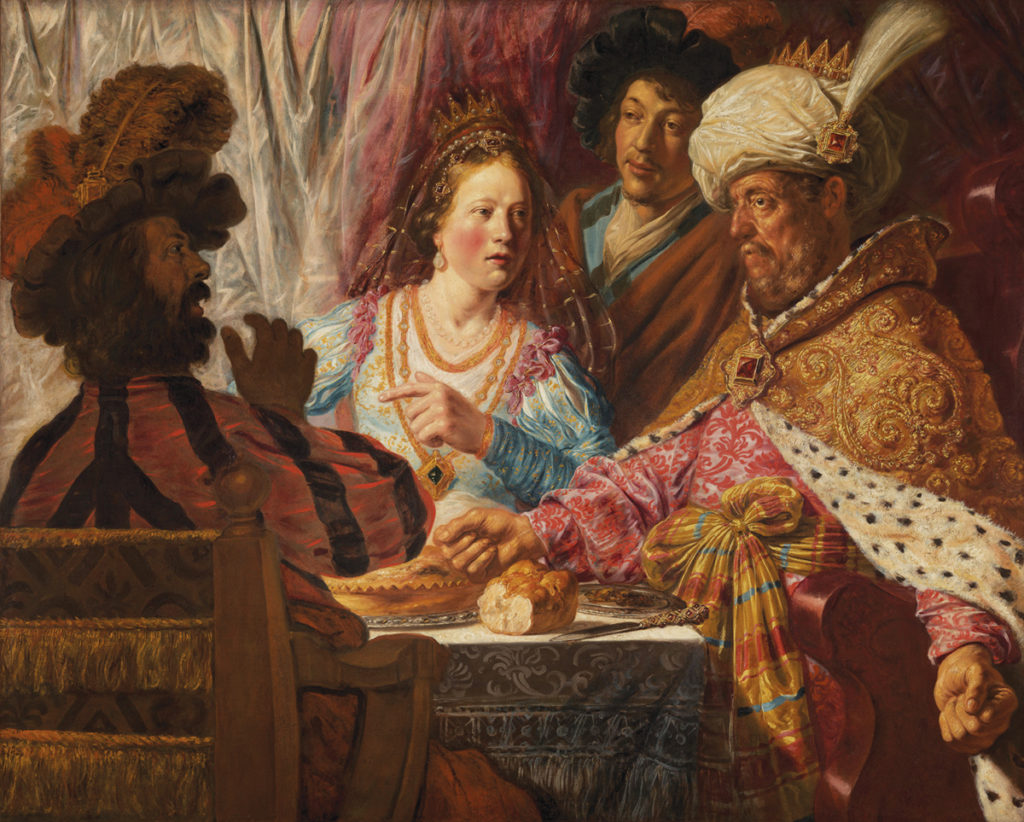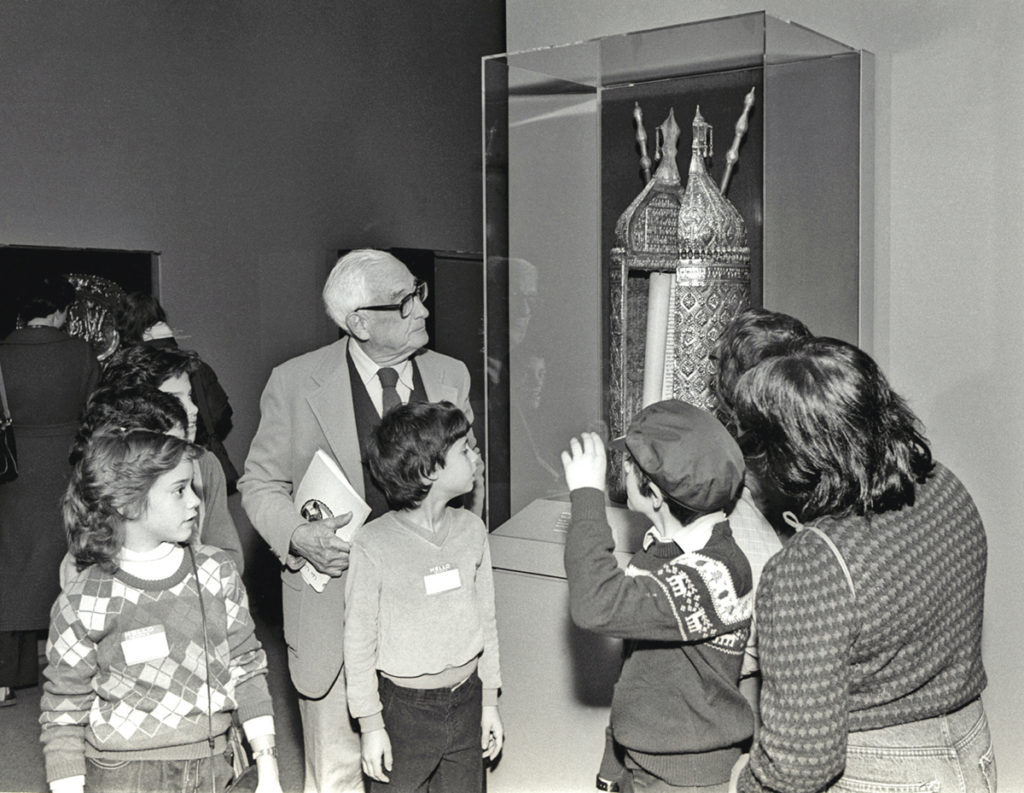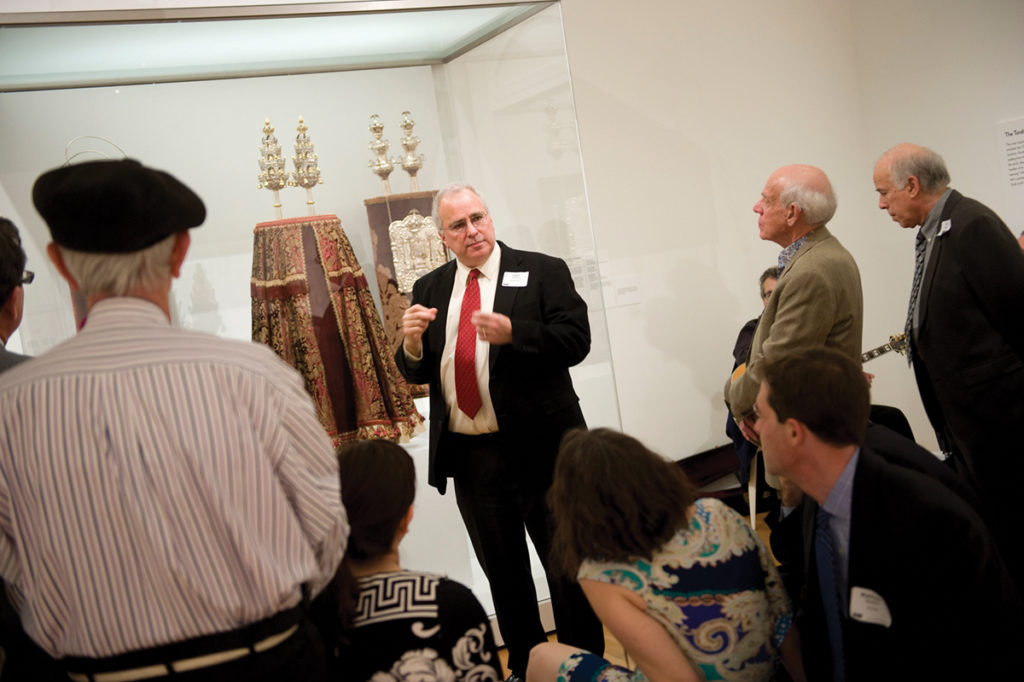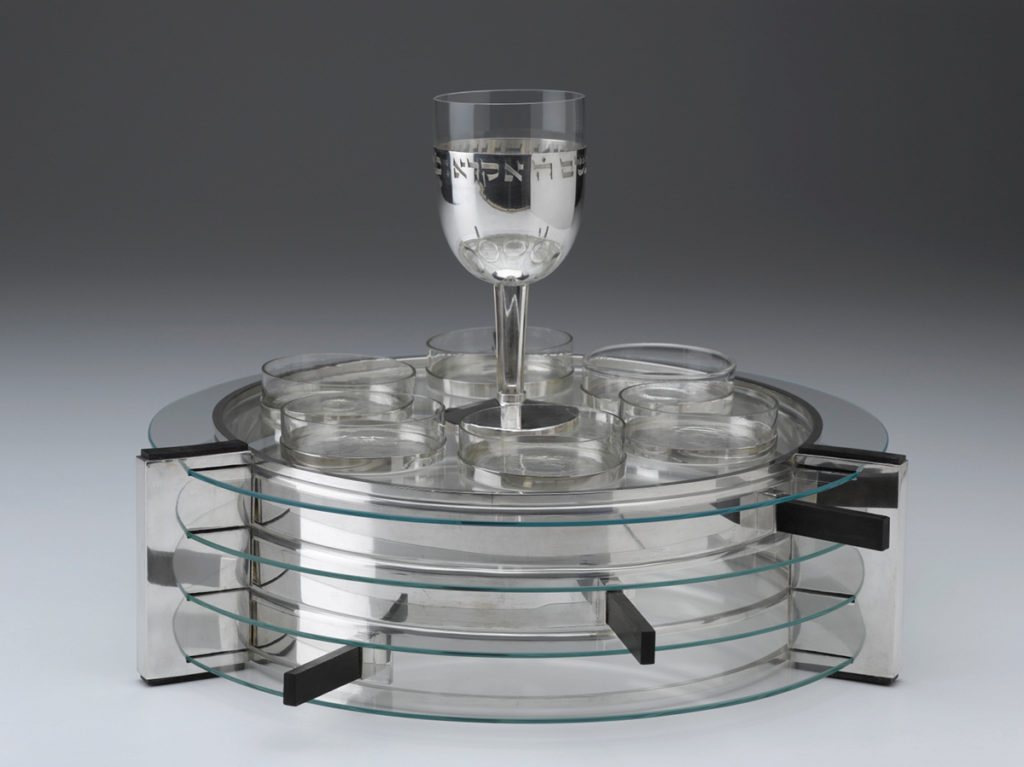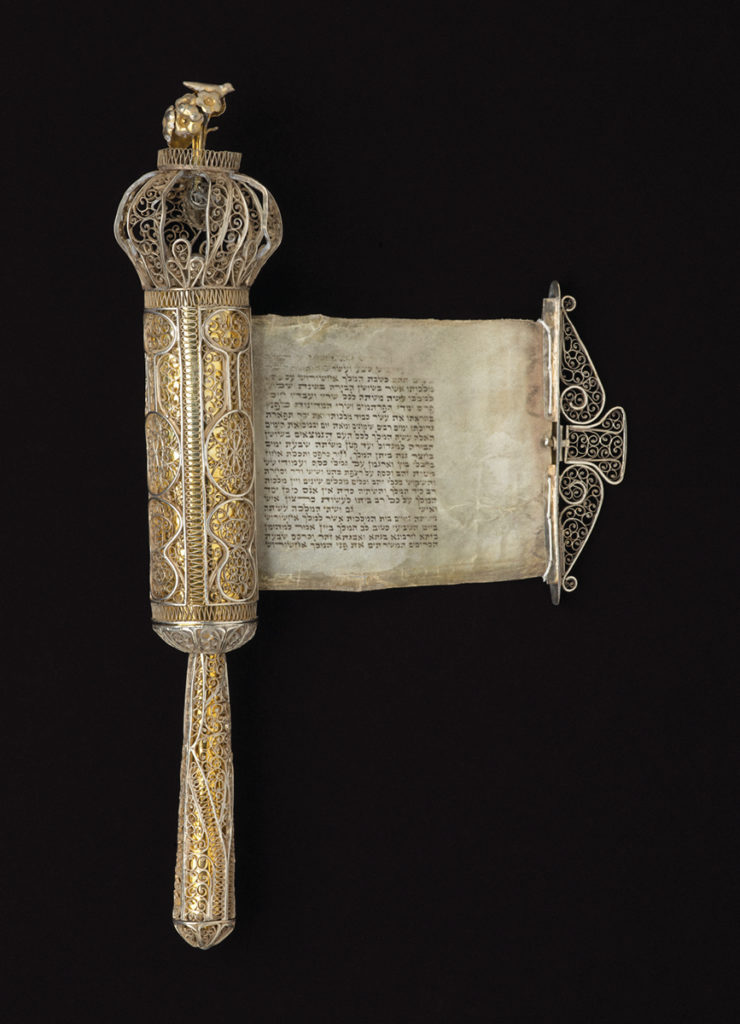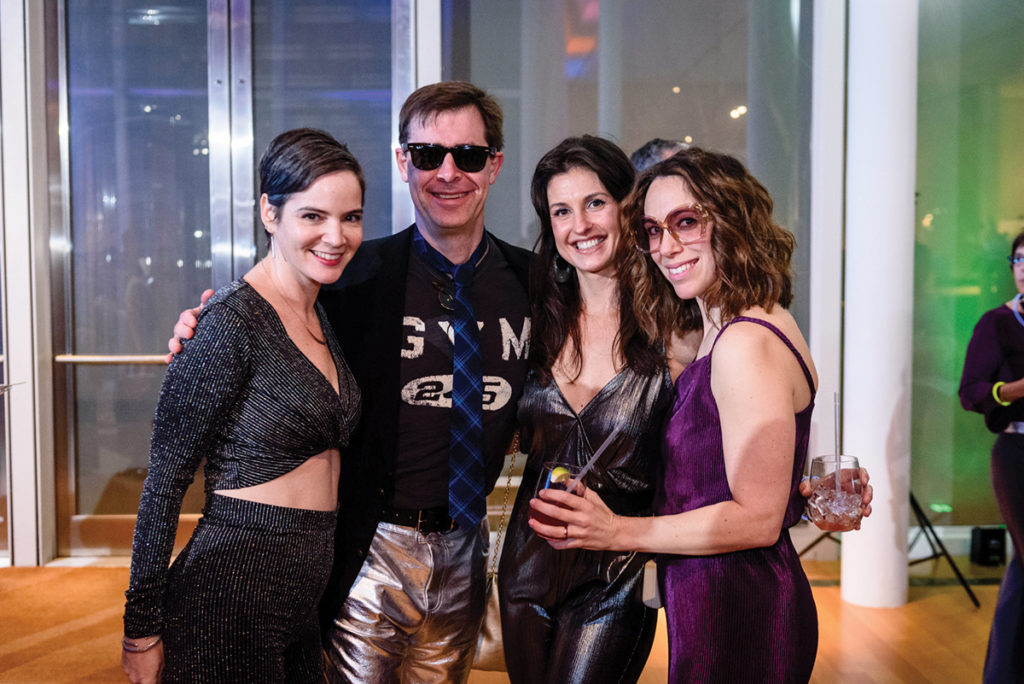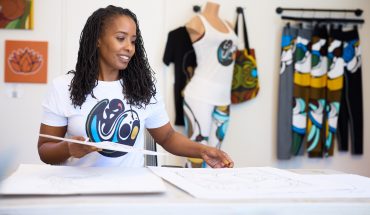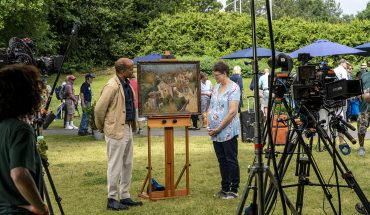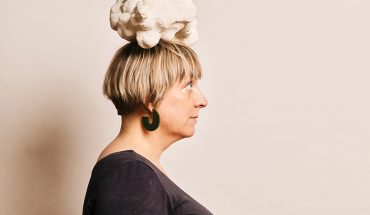An annual celebration at the North Carolina Museum of Art highlights an extraordinary accomplishment for both the local and national Jewish community.
by Ayn-Monique Klahre | photography by Eamon Queeney
In the Book of Esther, a story is told of Persian King Achasheverosh and his queen, Esther. When the king’s top advisor, Haman, comes up with a decree to kill all the Jews (he’s angry over a slight from Mordecai, their leader) Esther reveals that she herself is Jewish. She risks her own fate to convince her husband to reverse the decree, saving all of the Jewish people.
This story in the Hebrew Bible is the basis for Purim, the most festive of Jewish holidays, a day to celebrate standing up for one’s culture. Usually a raucous party, it involves reading the Esther Scroll, known as the Megillah, giving money to the poor, wearing costumes and feasting with wine and hamantaschen, a traditional pastry.
And here in Raleigh, it’s become the basis for an annual party in support of the Judaic Art Gallery at the North Carolina Museum of Art.
In 1971, Abram Kanof and his wife, Frances, moved to Raleigh from New York City, where he had a distinguished career as a pediatrician, medical researcher and clinical professor. The couple was also passionate about Jewish ceremonial art and history. “My parents saw a contemporary menorah at the 1928 World’s Fair, and that stimulated a lifetime of interest in art, and particularly in contemporary Jewish art,” remembers their daughter, Liz Kanof Levine.
Abram authored books on the subject, collected extensively, donated generously and served on the boards of the Jewish Theological Seminary and Jewish Museum; he was also president of the American Jewish Historical Society.
After the two moved to Raleigh to be near their daughter, Abram connected with Moussa M. Domit, the director of the NCMA. “It was natural that my father would find his way to the NCMA, and Mr. Domit was very receptive,” says Levine. Together, Abram and Domit came up with the idea of creating an exhibition called Ceremonial Art in the Judaic Tradition.
With Abram as guest curator, the exhibit featured nearly 200 pieces, some on loan from New York City’s Metropolitan Museum of Art, Brooklyn Museum and Jewish Museum, as well as 26 pieces from the Kanof family collection.
The popularity of the exhibition — particularly impressive given the relatively small population of Jews in the area — galvanized the two to create a permanent collection of Judaic art.
John W. Coffey was the curator of American and modern art at the NCMA at the time. He worked with Abram to raise funds and select and acquire Jewish ceremonial pieces of “art museum quality,” as Abram described in a 1974 article in The American Jewish Times Outlook. For Coffey, it was a “steep learning curve.”
“I’m not Jewish and was not trained in the decorative arts, so I brought in consultants, experts who knew the field, to develop a plan to build the collection,” he says.
In 1983, the Judaic Art Gallery opened as a permanent collection with 81 pieces, many of which were donated by the Kanof family. Among them was Ludwig Y. Wolpert’s sleek glass-and-silver Passover Seder Set with Plates, Dishes, and Wine Cup, a Bauhaus-era design destroyed by Nazis and refabricated in the 1970s, and Ilya Schor’s engraved silver Passover Seder Plate, done in cut and pierced silver inspired by Polish folk-art traditions.
In addition to their beauty and ceremonial importance, many of these pieces had stories of their own, having been smuggled out of Nazi Germany during World War II — another effort of racism and genocide that recalls Esther’s story.
“My favorite memory is seeing the first permanent gallery. It was small and intimate with the pieces resplendent against a royal blue background,” says Levine. “Seeing our pieces in the museum, I was so pleased to be able to share them, educate other people and keep them safe.”
Unfortunately, Frances Kanof passed away before it was finished. “I often thought that John and the museum sustained my father’s life after she died,” says Levine. Abram Kanof passed away in 1999.
“Each item holds such a magnificent story,” says Ellen Pizer. She became involved with the Judaic Art Gallery through her mother, JoAnn Pizer-Fox, who was close friends with the Kanofs. “Growing up Jewish in ITB Raleigh in the 1970s and 1980s, I was the ethnic diversity,” says Pizer. “My connection to the gallery feels very meaningful and profound; it’s part of my family’s legacy.”
“We were the first American art museum — not a Jewish museum — to have this type of gallery,” says Coffey. In 2001 the affiliate group Friends of the Judaic Art Gallery (FJAG) was born. “We wanted to build the collection to the level where we could argue for a place in the new building,” Coffey says.
Levine and Pizer-Fox were co-chairs, and when Pizer-Fox wound down her involvement a few years later, she tapped Sue Finkel, a longtime NCMA docent, to take her place. “This has been one of the most enriching and rewarding parts of my adult life,” says Finkel.
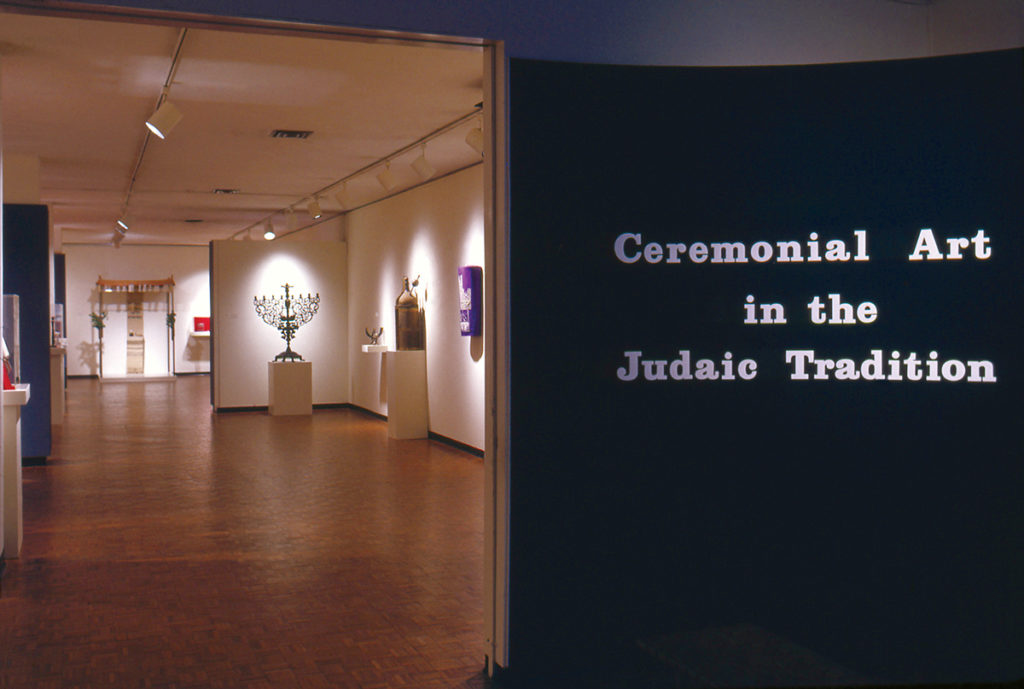
Together with other supporters, the FJAG works with the NCMA to raise funds. “It has been such a group effort. We hired consultants and worked hard to get everybody on board to pledge money towards possible acquisitions at auction,” says Coffey. “We were often competing against other museums or private collectors in Paris and New York.”
Graham Satisky remembers bringing her children to the Judaic Art Gallery in the early 2000s. “We went a lot. They thought it was cool to see things in a collection that they saw at the synagogue,” she says. Visiting the gallery emphasized that, while the Jewish population in North Carolina is relatively small, it has deep and important roots here.
Pizer’s grandfather, for example, immigrated to the area in the early 20th century and was one of the founding members of the Hebrew Cemetery and the Beth Meyer Synagogue. The Satisky family has been in the area since the early 1900s. “We heard stories of them riding in horse and buggy to go to Shabbat,” says Satisky.
In 2010, the Judaic Art Gallery was moved into an expansive area within the then-new West Building. By 2012, the idea for a party to generate funds and celebrate the collection was born, and Purim was a natural holiday to tie it to. “Purim is a joyous holiday,” says Finkel.
“Many synagogues and Jewish community organizations have annual Purim parties, so we decided that it would be a great way to bring people together to bring awareness to and raise funds for the Judaic Art Gallery at the NCMA.”
The theme of the first “I ♥ Purim” party was Purim Madness, and guests were encouraged to dress in interpretations of kings and queens. “We also hired a face painter — who knew adults love getting their faces painted? — and a woman who made beautiful crowns from flowers,” says Finkel.
The party started small. “When my husband and I first went to the party, it was just a small turnout, and most people there were over the age of 70,” says Pizer.
“I remember going to the party and thinking, This is amazing — we’re at a costume party at the art museum! Why is this not the party of the year?” Sure enough, over the last decade, it has evolved into a highly anticipated annual event.
Each year, there is a different theme; past themes include Woks and Lox, Love and Knishes, Hula and Hora, March Madness and 007 Diamonds Are Forever, all of which have a loose connection to the collection. “After a decade, you really have to go outside of the box to come up with them,” laughs Pizer. “But as soon as we know the theme, we get excited and start planning the costumes.
It’s hilarious and fun and the museum staff creates a wonderful ambiance with delicious food and drink.” The party always includes surprises or unique elements: one year, they had a lipsologist (who interpreted guests’ lip prints); another featured women walking around in body paint. “There’s always something fun and different,” Satisky says. This year, the theme is I ♥ Purim: An Intergalactic Gala, and they expect sci-fi-inspired costumes, cosmic cocktails at a galaxy bar, and Milky Ways for dessert.
“And, of course, the Judaic Art Gallery is open to visit with docents available to share info on the collection,” says Finkel. Within are several works related to Purim specifically, including a 19th-century Esther Scroll (Megillah) and Case — an ornate metal canister that houses a parchment inscribed with the story — and a painting by Jan Lievens entitled The Feast of Esther.
“It thrills me and fills me with so much pride to see people enjoying the party and enjoying the collection,” says Pizer. “It’s a far cry from my mother making latkes for Hanukkah for me to share with the kindergarten class.”
Indeed, these days the party, which Finkel believes is the only statewide Purim party in North Carolina, attracts guests not only from the Triangle, but from Greensboro, Winston-Salem and Pinehurst, among other places. “The party is open to everyone, whether they practice Judaism or are ethnically born but don’t practice, or aren’t Jewish at all,” says Satisky.
“It’s a good cause and a great time, it helps expose and educate people who don’t know about Judaism,” agrees Pizer.
Thanks largely to the efforts of the FJAG, the Judaic Art Gallery continued to grow. More pieces were added, and in 2010 it was moved to the West Building. The NCMA expanded the space dedicated to the gallery in 2015, and when the NCMA reinstalled its permanent collection last year, the Judaic Art Gallery moved to a more prominent place.
Digital displays offer in-depth descriptions of the objects, their history and their importance in the Jewish tradition. There are more than 90 objects in the collection, from an 18th-century Torah Crown to a silver Standing Hanukkah Lamp, designed in the mid-1920s by Ze’ev Raban of Jerusalem’s Bezalel Workshop, to contemporary pieces from living artists.
Today, “the Judaic Art Gallery is not just the most visible expression of Jewish culture in the South, but regarded as one of the most important collections in the country,” says Coffey. “What we’ve done with it, how we display and interpret it — those have become something of a prototype for other museums.”
This year, the gallery turns 40 and remains a rarity: The NCMA is one of just two art museums in the United States with a permanent gallery devoted to Jewish ceremonial art.
Coffey, who recently retired, has been supporting the museum on its mission to hire a permanent curator. “With any collection, unless you have a curator who looks after it, eventually it becomes irrelevant or static,” he says.
For Coffey, and for many who were involved in its creation, the Judaic Art Gallery is the accomplishment of a lifetime. “Working with this community and building this gallery has been the most enjoyable part of my whole career. For this state with a relatively small Jewish community to have one of the most active and important Judaic Art collections in the country, it’s an amazing evolution of what was once a very small gallery,” says Coffey.
“Now it’s one of the most interesting parts of the whole museum collection, it’s this gallery of dazzling objects that’s completely unexpected.”
“The Judaic Art Gallery is a great source of pride for the Jewish community in North Carolina,” says Finkel.
North Carolina,” says Finkel. “A lot of people are gone now that would be so excited to see this,” Pizer agrees. “In a time when we still live with so much antisemitism and racism, the idea that we can have so much pride, support and community around the Judaic Art Gallery is amazing. It would be special anywhere, but the fact that it exists here in the Triangle is spectacular.”

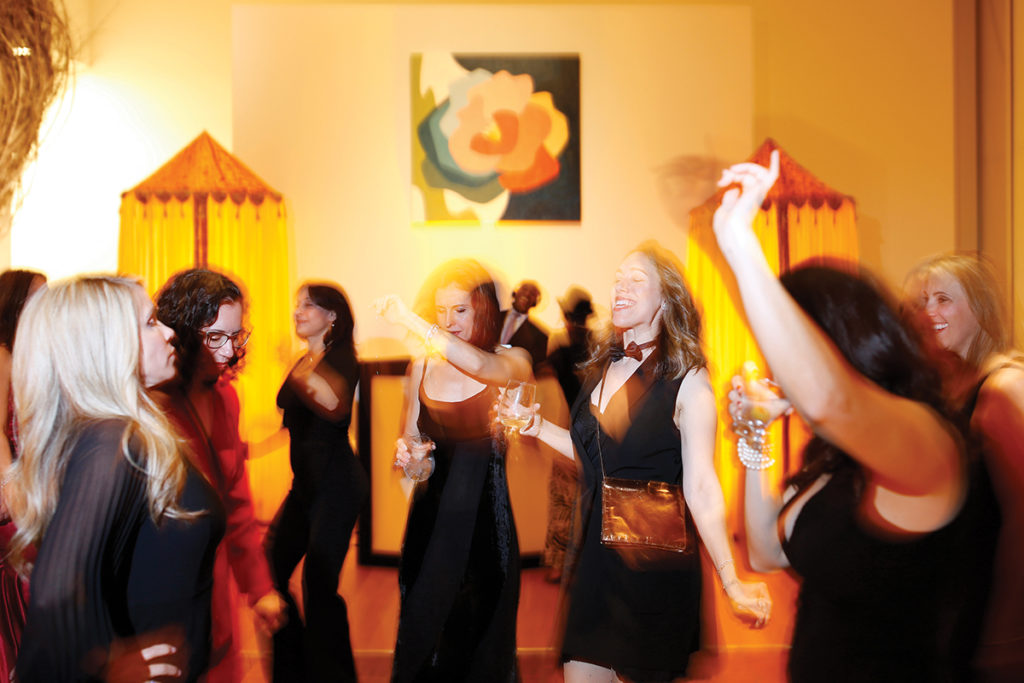
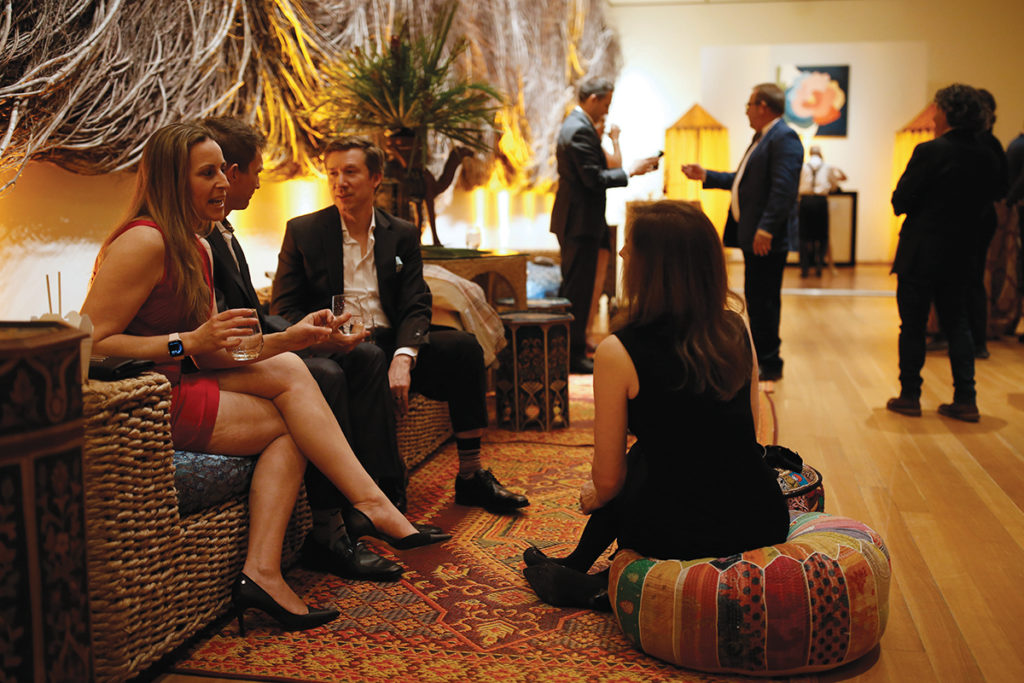
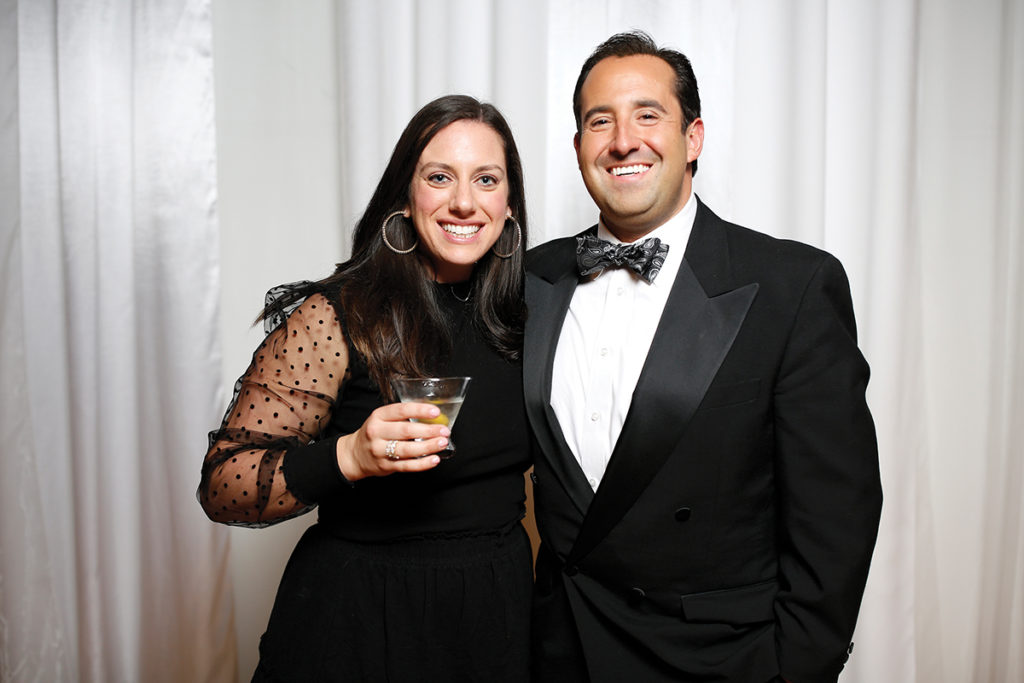
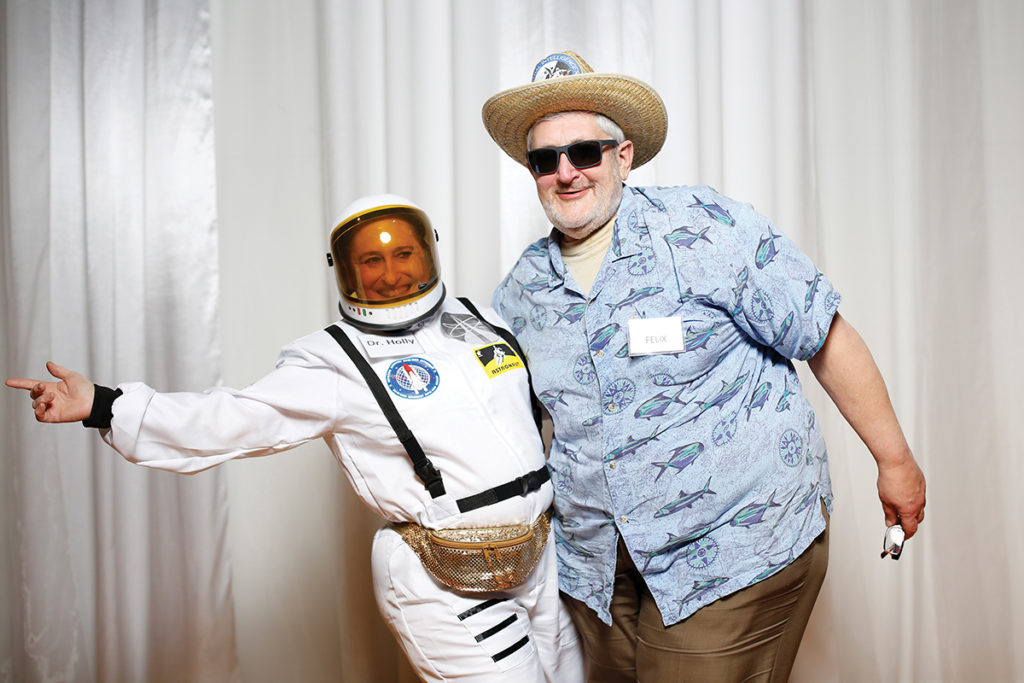
This article originally appeared in the March 2023 issue of WALTER magazine.

